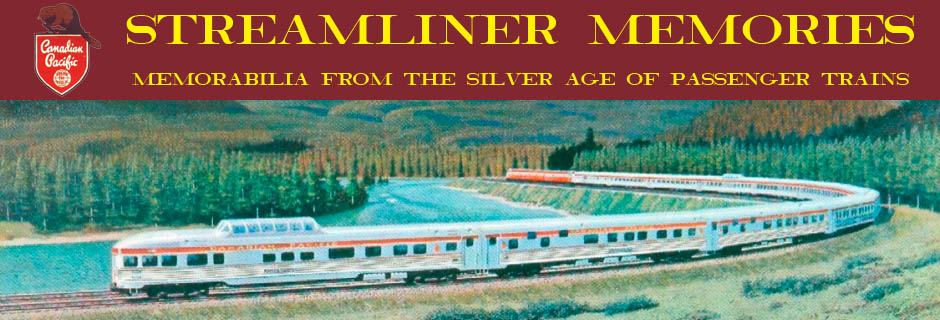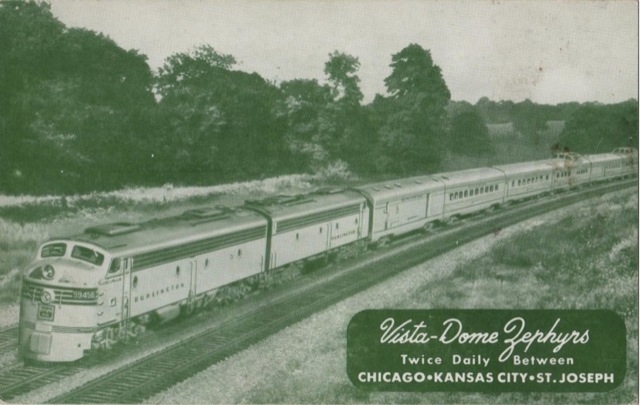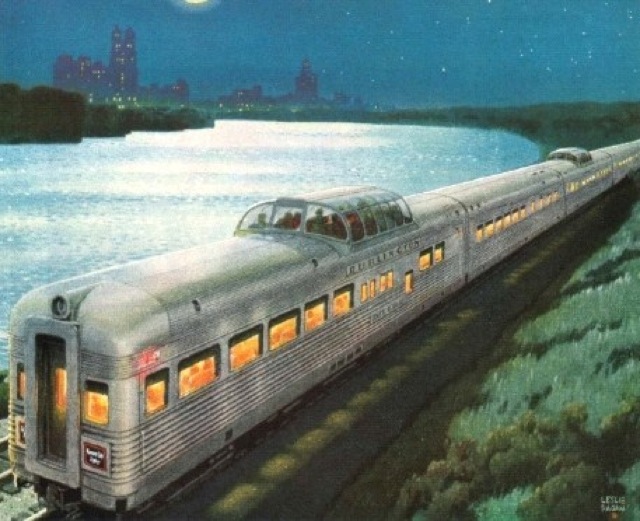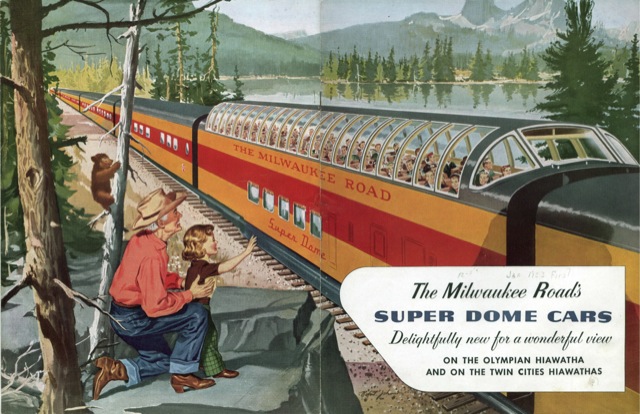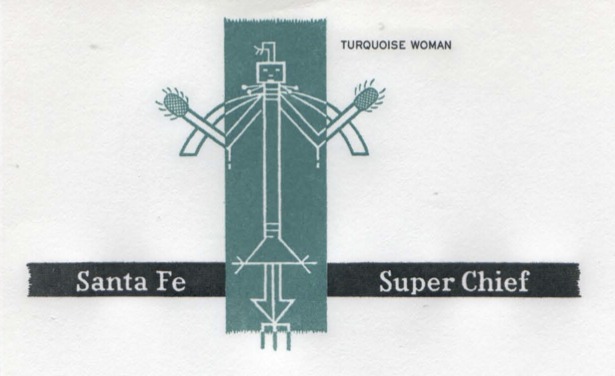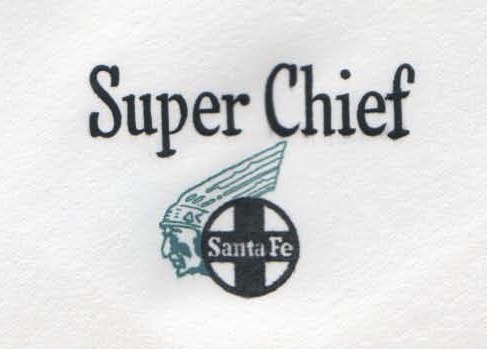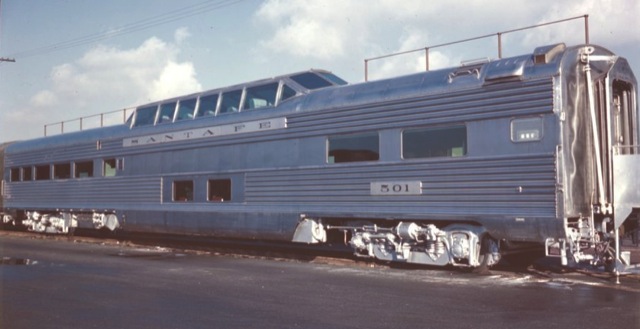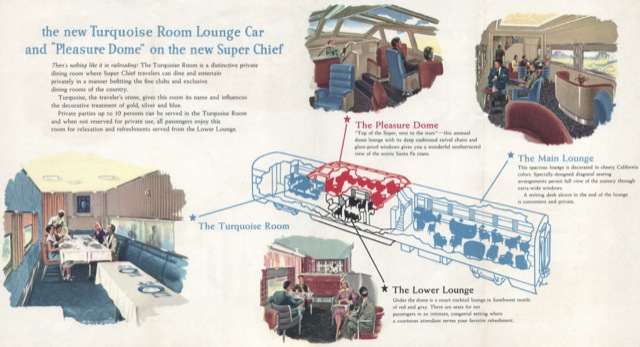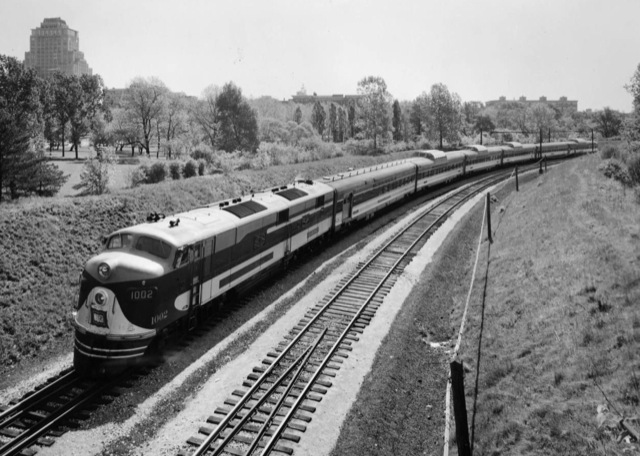When Burlington inaugurated its vista-domed Kansas City and American Royal Zephyrs on the Chicago-Kansas City route, the Santa Fe responded by ordering full-length domes for several trains serving the same route. Although Pullman, which manufactured the Milwaukee Super Domes, proposed to make similar cars for the Santa Fe, the railroad turned instead to Budd to build its “Big Domes.”
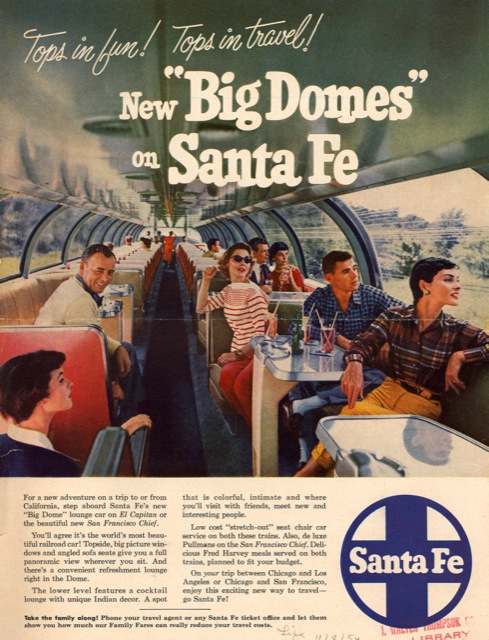
This advertisement from the November 8, 1954 Life magazine shows passengers craning their necks to see the scenery from the lounge portion of the Big Domes. Click image for a larger view.
In March, 1954, the Santa Fe added one of these domes to each of the six El Capitan all-coach Chicago-LA trains plus one each to a pair of trains that went between Chicago and Oklahoma City. Inaugurated in 1938 (initially between Chicago and Wichita), the northbound train each day was called the Chicagoan while the southbound train was called the Kansas Citian.
